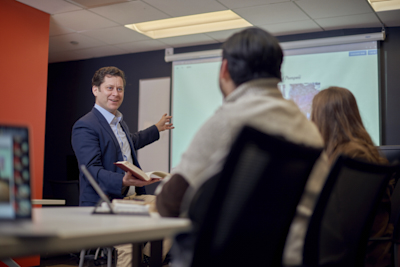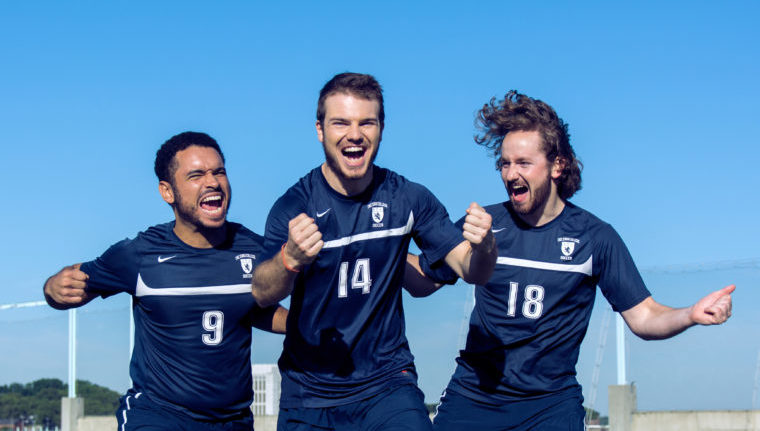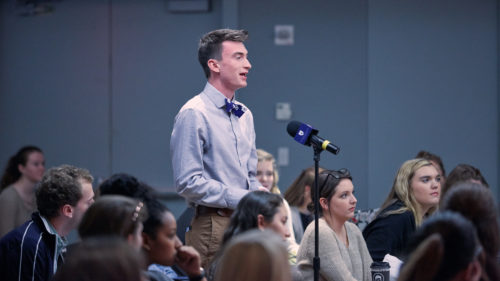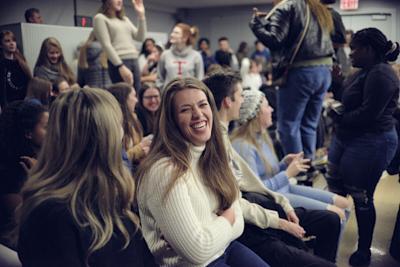Dr. Bleattler Leads Study Abroad in Rome and Florence
In May, seven King’s students and Drs. Bleattler, Kinlaw, Siedell, and Salyers traveled to Italy for the College’s sixth Europa trip.
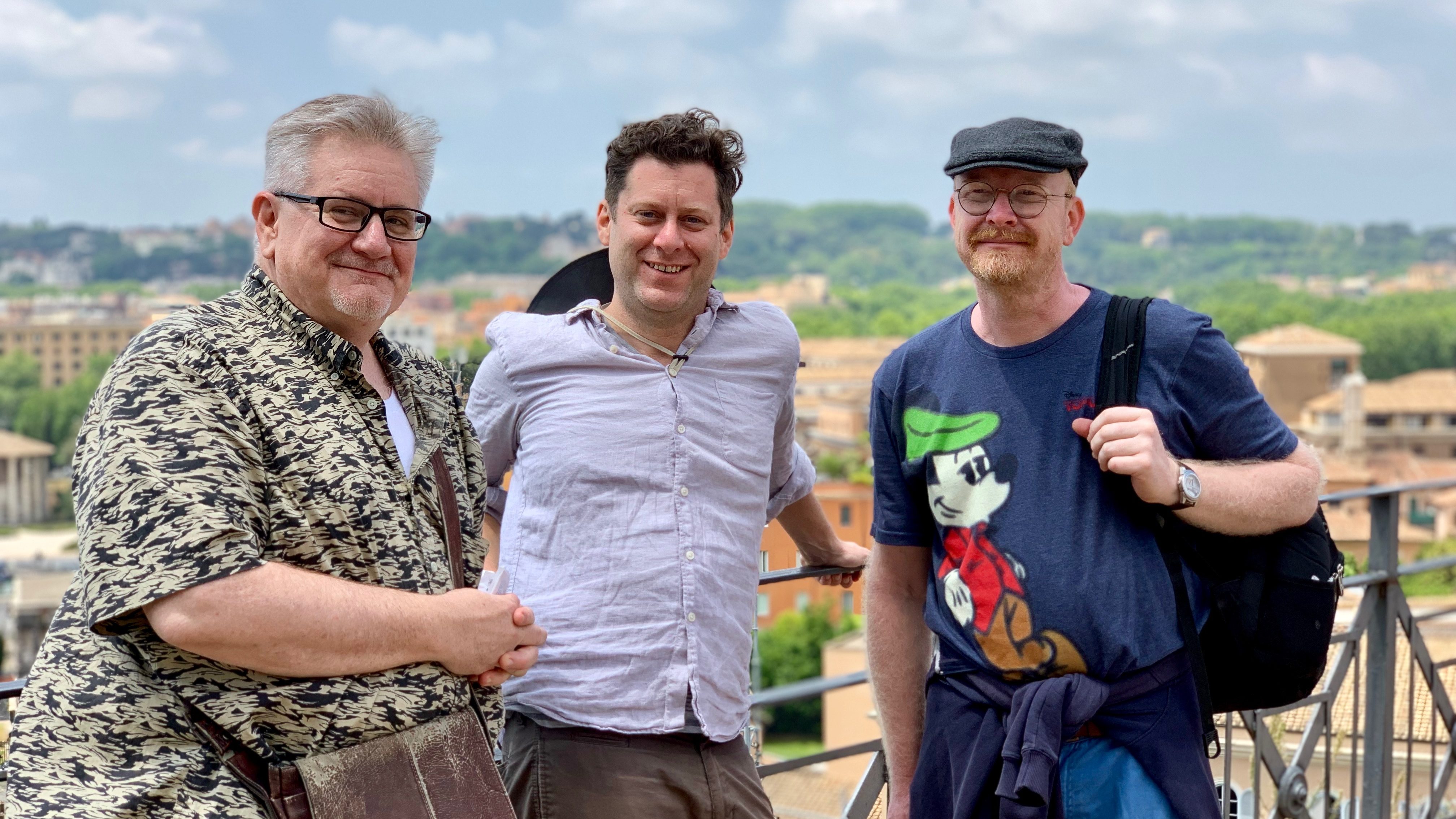
In May, seven King’s students traveled to Italy for the College’s sixth Europa trip. Dr. Henry Bleattler, chair of the program in Media, Culture, and the Arts, led the venture, with Dr. Joshua Kinlaw, assistant professor of history and humanities; Dr. Daniel Siedell, senior fellow in modern art history, theory, and criticism; and Dr. Stephen Salyers, associate professor of communications and humanities. With Italy as their classroom, students took two for-credit classes over six weeks: three weeks in Rome and three weeks in Florence, with trips to Naples, Siena, Pisa, Mt. Vesuvius, Ravenna, Milan, and Venice.
Bleattler designed the Europa summer program as an opportunity to study in European cities that have served as landmarks in the development of Western civilization. (Previous Europa destinations have included Paris, Berlin, and Vienna.) In Italy, one primary goal “was for students to see the relationship between the Greco-Roman world and that of the Renaissance and the Baroque,” said Bleattler. “In the middle of all that comes the rise of Christianity, which both receives and gives to these bookends of the ancient and the modern.” Students visited and studied ancient (600 B.C.), modern (1930s), and in between, with a focus on the ancient, Renaissance, and Baroque periods. “Italy is a ground zero of Western civilization,” said Kinlaw. “It’s no accident that the Renaissance (and ‘modernity’) were forged in the city-states of the Italian peninsula.”
Students read mainly primary sources (including Pliny and Giorgio Vasari), studied such topics as the founding of Rome and early Christian iconography, visited the Hut of Romulus on the Palatine Hill and the Sistine Chapel at the Vatican and beyond, all while exploring the connections between seemingly unrelated sites, art, texts, and periods. “We had professors and students dialoguing with one another over ruins, texts, and important artistic and historical sites,” said Bleattler. The program also gave students a taste of what eighteenth- and nineteenth-century Europeans knew as the Grand Tour, wherein those from aristocratic classes, primarily from Great Britain, would travel to Italy in order to experience the roots and remnants of their civilization, and to see how its influence continued into their own world.
Caitlyn Limbaugh (HUM ’21) was immediately interested when she saw that the Europa program was planning a venture to Italy. “Italian history was so influential in the formation of the Western world as we know it, from the lasting impact of the Roman Republic and Empire to the emergence of Papal power to the birth of the Renaissance in Florence. I wanted to see where it all began,” she said. She described the Europa Italy venture as “full to the brim with awe-inspiring moments.” For her, viewing the ruins of the Imperial Forum in Rome from Capitoline Hill was particularly powerful: “It’s clear from the grandeur of the structures that, at the height of Roman power, it would have been glorious.” Gracie McBride (ENG ’21) was struck by seeing up close the many paintings and sculptures she had studied over three semesters of Arts and Ideas, such as Bernini’s Daphne and Apollo and The Rape of Proserpina statues in Rome’s Borghese Gallery. “What made it even more special,” she said, “was seeing so many of these artifacts in their original location, like Caravaggio’s Conversion of St. Paul or Giotto’s Arena Chapel, which are not in museums but in the churches where they have always been.”
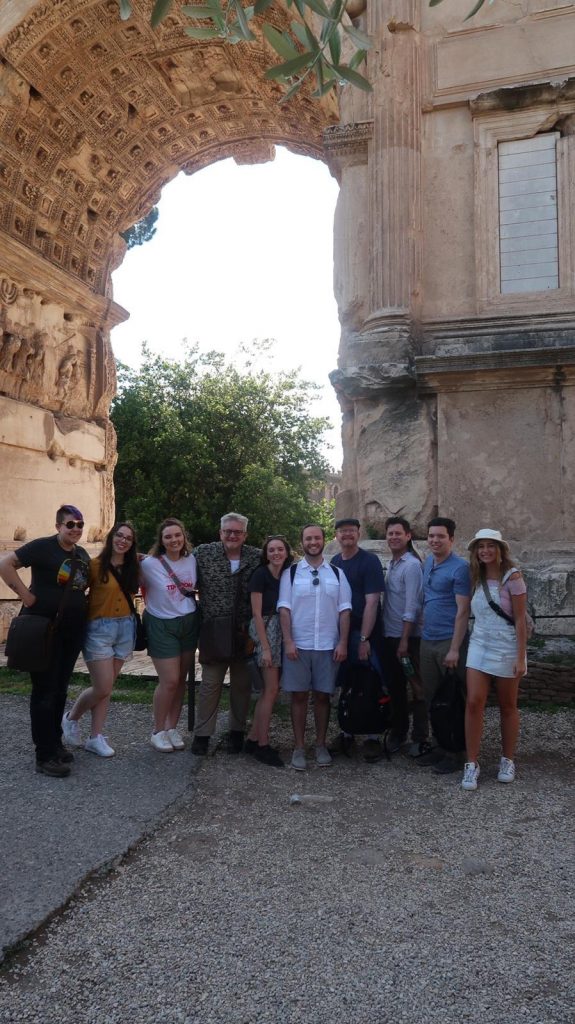
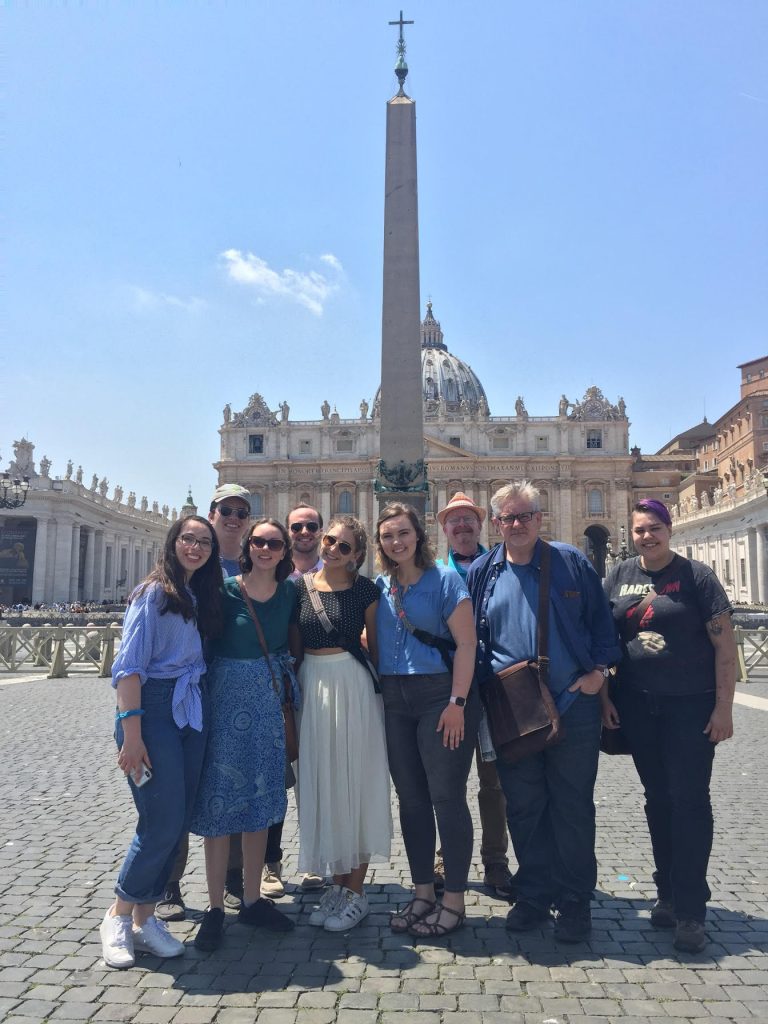
Patterson Tompkins (MCA ’20) noted the uniqueness of the opportunity to go to Italy with Kingsian professors, and to be able to outstay the feeling of being a tourist. “Since we were there so long,” he said, “we stayed in apartments and we got to build a reputation with the guy who ran the coffee shop on our block.” He also appreciated the rich discussions among professors and students. Caitlyn agreed: “It was such a rare and incredible opportunity not only to study Italian arts and history with Italy itself as the classroom, but to do so with professors who were both inspiringly passionate and deeply knowledgeable on those subjects.” She said that the six weeks with this particular King’s cadre “was an absolute joy. History and the arts take on entirely new dimensions when you are able to share in the experience with people you care about.”
For Gracie, the trip brought new insights into the relationship between the creative process and the life of faith.
Dr. Siedell talked a lot about the life of the artist and what we do with their art after they’re gone. But we also took it a step further and looked at the artist and their intention and compared the creative process to what Paul says in Romans 8 where he describes how he doesn’t do what he wants to do. Even the artists themselves can’t ever fully actualize what they want to, which means that they are not the sole artist. Rather, God is the other half of the inspiration and creation when we make art. Conversations like this brought new life and meaning into how we look at and create art, and shaped my experience on the trip and my perspective coming back.
For Bleattler, one of the biggest takeaways from the trip was “how transcultural Western civilization is. The West did not spring up fully formed; rather, it was built piece by piece as it absorbed the best of what it encountered, whether Greco-Roman, Germanic, or Christian. There was a strong sense of culture being created on the ‘shoulders’ of previous giants, as it were. It was both humbling and enlightening.” Kinlaw added that “Western civilization is more than any one place, but we at TKC must appreciate Italy and its history if we wish to claim a liberal arts tradition.” Places like the Spanish Chapel of Santa Maria Novella in Florence “help us appreciate our heritage. They equip us to enter into conversations about the ongoing re-evaluation of ‘Western civ.’”
The professors and students all glow about their time in Italy. “It felt like a lifetime of learning packed in six glorious weeks,” said Bleattler. He hopes to take the Europa program to Russia next. “Regardless of where in the world the Europa program goes,” Caitlyn said, “I would urge anyone who is able to jump at the opportunity. Any setting is worth exploring so long as the incredible professors we have at King’s are there to bring it to life.”

